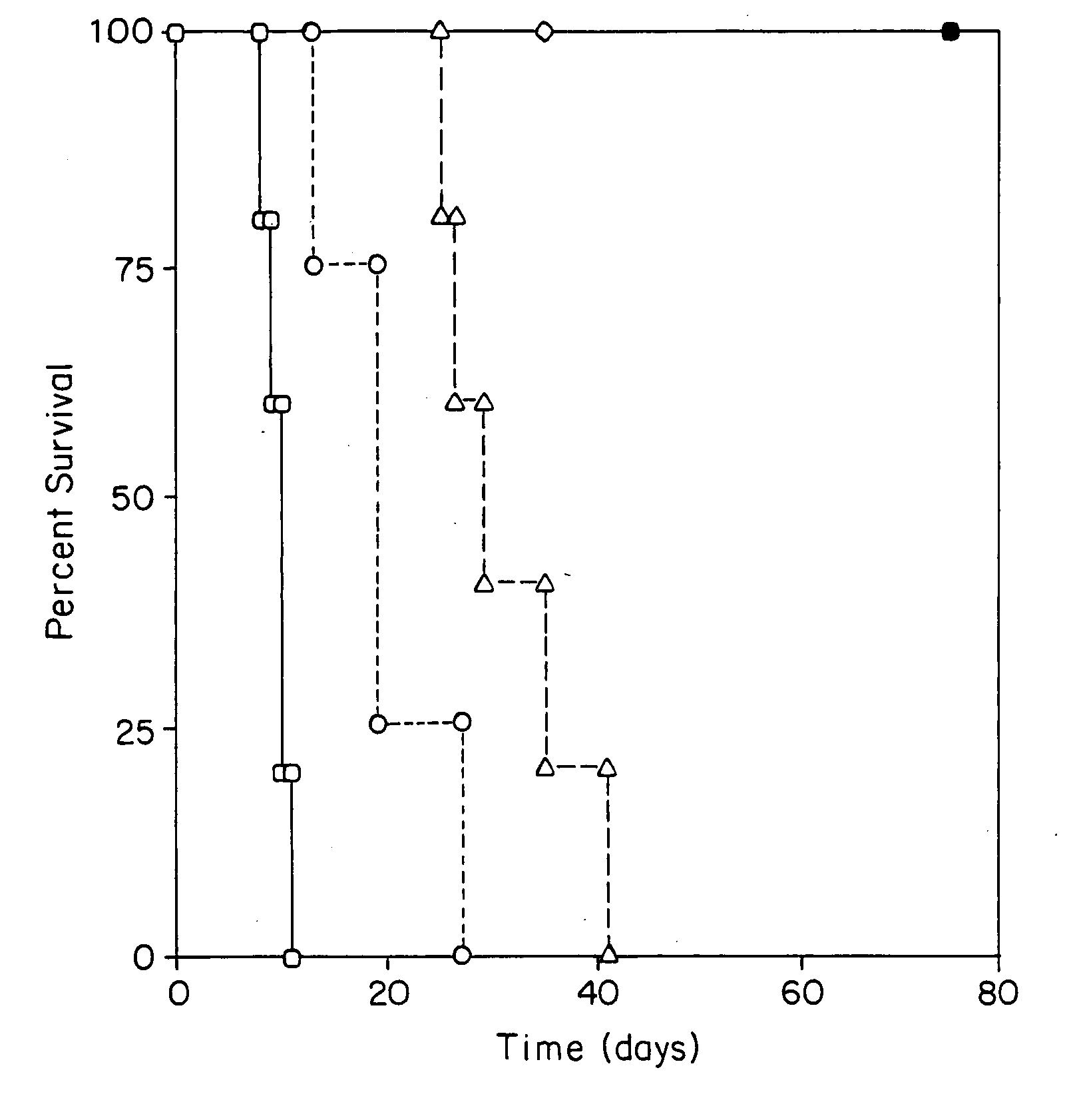Transplant tolerance by costimulation blockade and T-cell activation-induced apoptosis
a technology of costimulation blockade and t-cell activation, which is applied in the direction of antibody medical ingredients, drug compositions, immunological disorders, etc., can solve the problems of ineffective permanent engraftment and no established method of inducing tolerance of organ or non-hematopoietic tissue allografts in the clinic, and achieve the effect of prolonging the survival of allografts and enhancing the beneficial attributes of costimulation blockad
- Summary
- Abstract
- Description
- Claims
- Application Information
AI Technical Summary
Benefits of technology
Problems solved by technology
Method used
Image
Examples
Embodiment Construction
[0011] Graft rejection in mammals involves a T-cell-mediated immune response. T-cells (T-lymphocytes) are activated when (1) they recognize foreign protein antigen fragments physically associated with major histocompatibility complex (MHC) molecules on the surface of antigen presenting cells (APCs) and (2) they receive costimulatory signals delivered by the APCs. Both specific ligand recognition and costimulation are required for T-cell activation.
[0012] One costimulatory signal is provided by the B7 molecules B7.1 and / or B7.2, which are structurally related costimulatory molecules on APCs. One T-cell surface molecule receptor for B7 molecules is CD28 (Tp44), a member of the immunoglobulin superfamily. Once T-cells are activated, they express CTLA4, an additional receptor for B7 cells. CTLA4 binds B7 with more affinity and avidity than does CD28. Another costimulatory signal is provided by the APC molecule CD40. This molecule binds with the T cell surface molecule CD40 ligand (CD40...
PUM
| Property | Measurement | Unit |
|---|---|---|
| time | aaaaa | aaaaa |
| MRI | aaaaa | aaaaa |
| affinity | aaaaa | aaaaa |
Abstract
Description
Claims
Application Information
 Login to View More
Login to View More - R&D
- Intellectual Property
- Life Sciences
- Materials
- Tech Scout
- Unparalleled Data Quality
- Higher Quality Content
- 60% Fewer Hallucinations
Browse by: Latest US Patents, China's latest patents, Technical Efficacy Thesaurus, Application Domain, Technology Topic, Popular Technical Reports.
© 2025 PatSnap. All rights reserved.Legal|Privacy policy|Modern Slavery Act Transparency Statement|Sitemap|About US| Contact US: help@patsnap.com


